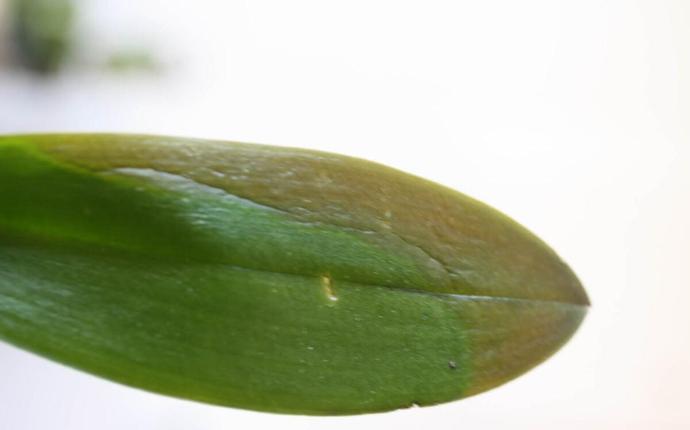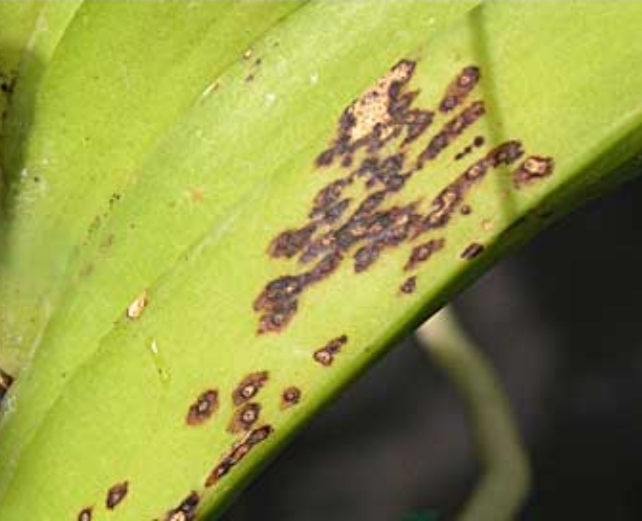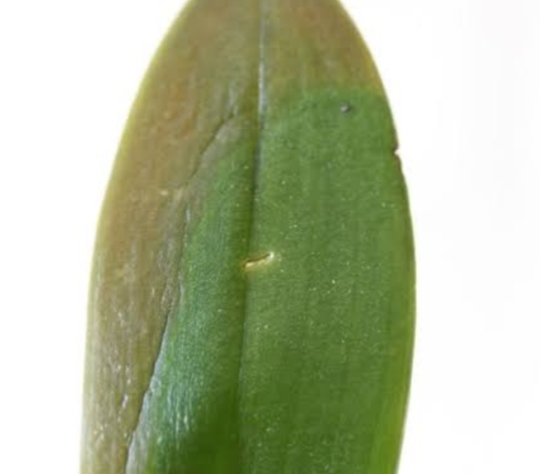Ground Orchid Plant
GROUND ORCHID, also known as Spathoglottis, is an outdoor orchid. Plant in well-draining soil with partial to full shade. Water consistently, and fertilize during the growing season for optimal flower production. Mulch to retain moisture and suppress weeds.
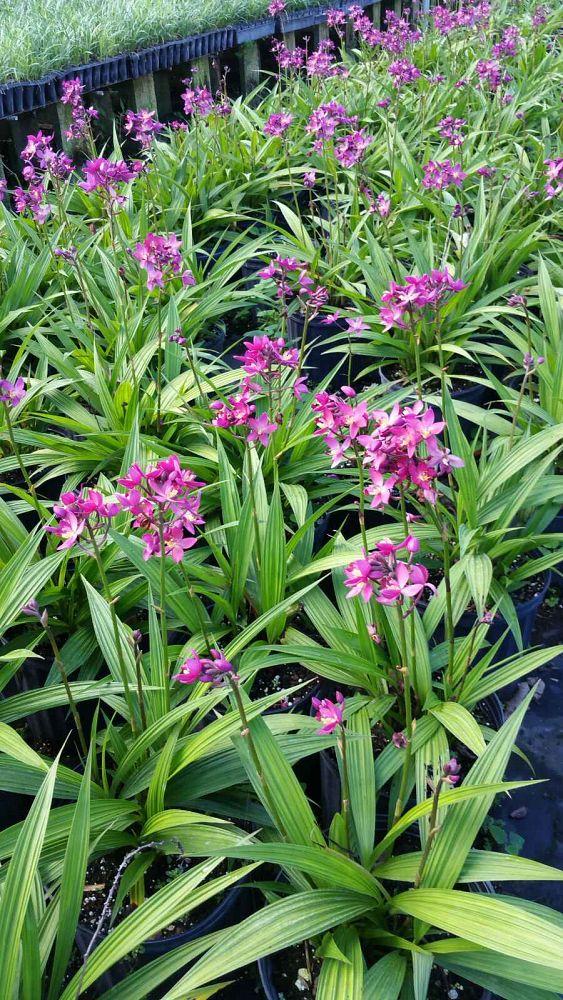
Habit
Perennial
Height
1-2 ft
Growth
Slow
Soil
Well Drained, Loamy
Shade
Indirect light to shade
Moisture
Moist
Edible
No
Medicinal
No
Origin
Asia
Climatic Condition
Tropical, Subtropical
Temperature (°)
20-35°C
Humidity (%)
50-80
Potting media
Peat, compost
Fertilizers
Organic
Watering
Moderate
Plant Weight
300-600 g
Flowering Time
Year-round
Soil Ph level
6.0-7.5
Water Ph level
6.0-7.5
Soil EC
1.0-1.3
Yield Per Plant
Ornamental
NPK ratio
20:20:20
life Span
5-10 years
Health Benefits
Decorative flowers, pollinator attraction
Suggested Grow Media or Potting Mix ?
50% peat, 25% perlite, 25% compost
Suggested Fertigation/Fertilizers
Fertilize every 2 weeks with a balanced fertilizer.
Common Diseases and Remedies
leaf spot , rust .
Red spots , twisted leaves , Red to brown spots .
FYM , NSKE
HEALTH BENEFITS
· Some species are used in traditional medicine for skin issues.
· No widely recognized medicinal benefits.
What Is A Ground Orchid ?
A Ground orchid, also known as a terrestrial orchid, is an orchid that grows in soil rather than as an epiphyte (grows on trees) or lithophyte (grows on rocks). Terrestrial orchids, unlike their epiphytic relatives, are adapted to underground environments and can be found in a variety of habitats, including forests, meadows, and wetlands.
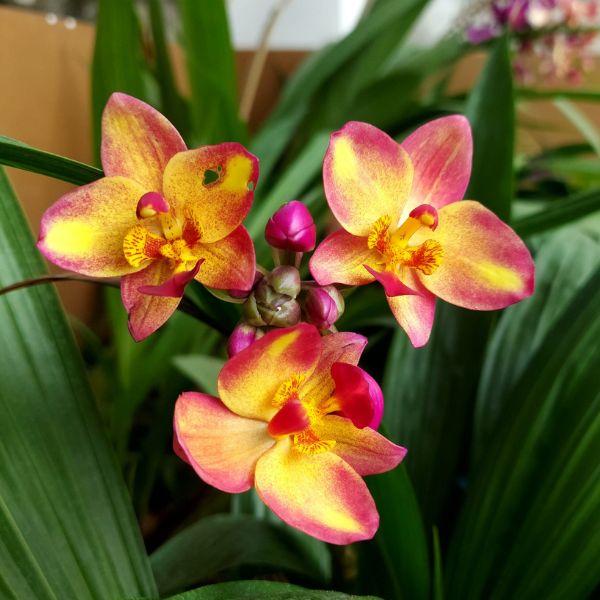
What Are The Different types of ground orchid plants?
There are many species and species of orchids in the earth; each has its own unique characteristics and growth needs.
1. Bletilla:-
Bletilla, also known as Chinese orchid, is native to Southeast Asia. It has grass-like leaves and beautiful pink, purple or white flowers in spring.
2. Calant :-
The Calant orchid is widespread and diverse, with species in Asia, Africa and America. They often have large, curved leaves and produce colorful flowers of various shapes and sizes.
3. Pterodactyl:-
Pterodactyl orchids, native to Australia and New Zealand, are often called green orchids because of their hooded flowers. They are often found growing in forest environments.
4. Cymbidium:-
Although most Cymbidiums are epiphytes, some live on land and grow in the soil. They are prized for their large, long flowers in white, yellow, pink and green.
5. Spathoglottis:-
Spathologlottis, also known as the Philippine soil orchid, is native to Southeast Asia and the Pacific Islands. It has broad, lance-shaped leaves and colorful flowers in purple, pink, white and yellow.
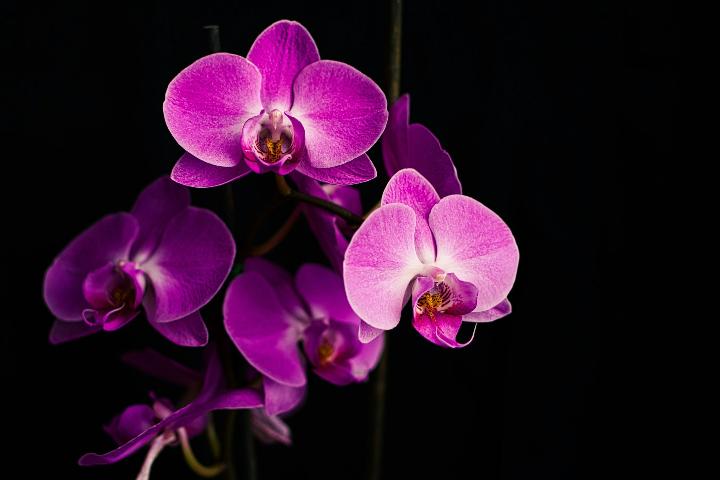
How to care for ground orchid plant ?
Caring for soil orchids includes providing suitable growing conditions, watering, fertilizing and occasional maintenance. A guide on how to care for orchids:
1. Location:-
Grow ground orchids in full sun or partial shade. Too much direct sunlight can burn their leaves, while insufficient light can prevent them from blooming. Use a well-drained potting mix rich in organic matter, such as a mixture of peat moss, perlite and pine bark. Make sure the soil in your garden bed is loose and well-drained. It keeps the soil in balance but does not stagnate it. Once the soil surface is one inch dry, water adjusts to conditions such as temperature and humidity. In regions with temperate climate and good growing conditions, such as tropical and subtropical regions, indoor orchids can be grown outside the forest. They can be planted directly in garden beds or placed in containers in shade or partial shade. Outdoor cultivation allows orchids to benefit from natural light, air and environment. In areas with severe weather conditions or limited outdoor space, growing orchids indoors may be a viable option. However, in order for them to enjoy their living spaces, sufficient light, humidity and temperature must be provided. Place orchids indoors near a sun-filtered window or provide supplemental grow lights. Use a humidifier or place the orchid in a tray filled with pebbles and water to maintain medium to high humidity. Also provide proper ventilation to prevent air stagnation and reduce the risk of pests and diseases.
2.Sunshine:-
Ground orchids generally prefer full sun or partial shade. Ground orchids thrive where there is indirect or filtered sunlight. This means that they benefit from sunlight that is partially or partially blocked by trees, curtains or other objects. Do not expose them to direct sunlight, especially during the hottest hours of the day, as this can damage their leaves. If you are planting orchids outdoors, choose a location that will receive partial shade. This could be under trees or somewhere that gets bright sunlight during the day. Maintaining a balance of light and shade helps prevent leaf burn while allowing the orchid to photosynthesize and grow. When growing orchids indoors, place them near a window and filter sunlight with sheer curtains or blinds. Instead, use lighting designed to provide appropriate use and timing of light. Light duration is 12-14 hours per day to simulate natural sunlight.
3.Soil:-
The soil where orchids will be planted must be well-drained and rich in organic matter. Soil orchids, like other types of orchids, are sensitive to standing water, which can cause root rot. Choose a well-drained soil mix to prevent water from pooling at the roots. A mixture containing ingredients such as perlite, coarse sand or pine bark will help improve drainage. In-ground orchids benefit from soil containing organic matter, which provides essential nutrients and helps retain moisture without becoming waterlogged. Peat moss, coir fiber, or well-decomposed compost are the best sources of organic matter to include in the soil mix. Orchid roots need good ventilation to develop. Adding perlite, coarse sand or small pebbles to the soil mix will help create air pockets and improve soil structure so the roots can breathe and grow properly. Soil orchids generally prefer slightly acidic to neutral soil conditions. When preparing your soil mix, aim for a pH range of 5.5 to 6.5. You can adjust the pH if necessary by adding a softener such as lemon juice to raise the pH or adding sulfur to lower the pH.
4.Hydration:-
Proper irrigation is essential for the health and growth of soil orchids. Keep the soil balanced but not waterlogged. Ground orchids prefer consistent moisture, so keep water levels low throughout the growing season. Allow the topsoil to dry out some water, but do not allow it to dry completely. Water your orchid regularly, especially during active growth or flowering period. Watering frequency depends on temperature, moisture and soil flow. Generally speaking, water when the top soil feels dry to the touch. When watering, pour water directly into the soil around the base of your orchid instead of the top. This helps prevent water from pooling in the crown of the plant, which can cause rot and fungal diseases. Use a water bottle with a narrow or soft opening to control the flow of water and not disturb the roots. Indoor orchids generally prefer rainwater or distilled tap water, which may contain chemicals such as chlorine or fluoride that are harmful to orchids. If you are using tap water, let it sit for at least 24 hours to allow the chlorine to dissipate before watering your orchids.

5.Nourishment:-
Maintaining nutrient balance in orchid plants in the soil is important for good growth and flowering. Although specific needs vary by variety and growth, a fertilizer balance of 20-20-20 or a similar NPK (nitrogen-phosphorus-potassium) formula is generally appropriate for indoor orchids. Nitrogen is important to support the growth of leaves and stems. It is responsible for lush green vegetation and all important plants. However, too much nitrogen can cause excessive leaf growth, which can affect flowering. Phosphorus is necessary for root growth, flowering and fruiting. It helps strengthen the root and stimulate flower production. Balanced phosphorus levels are important to keep orchids blooming vigorously in the soil. Potassium plays an important role in whole plant health and immunity. It helps regulate water absorption, transport nutrients and activate enzymes in plants. Potassium also helps increase flower quality and longevity.
6.Issues:-
Orchid plants in soil, like other plants, can have many problems that affect their health and growth. A common problem, overwatering can cause root rot and other fungal diseases. Make sure drainage is proper and water your orchid only when the top finger of the soil feels dry to the touch. Conversely, being underwater can cause dehydration and stress in underground orchids. Monitor humidity regularly and water as necessary, especially during growth or flowering. Inadequate irrigation can lead to waterlogging, root rot, and other water-related problems. Use a good mix of water or amend your soil with materials such as perlite or pine bark to improve drainage.
What are the benefits of ground orchids?
Ground orchid plants have many benefits that make them a valuable addition to the garden and interior:
1. Aesthetic Appeal
2. Versatility
3. Low maintenance
4. Long bloom time
5. Creating pollinators
6. Adaptability
7. AIR CLEANING
8. Therapeutic value
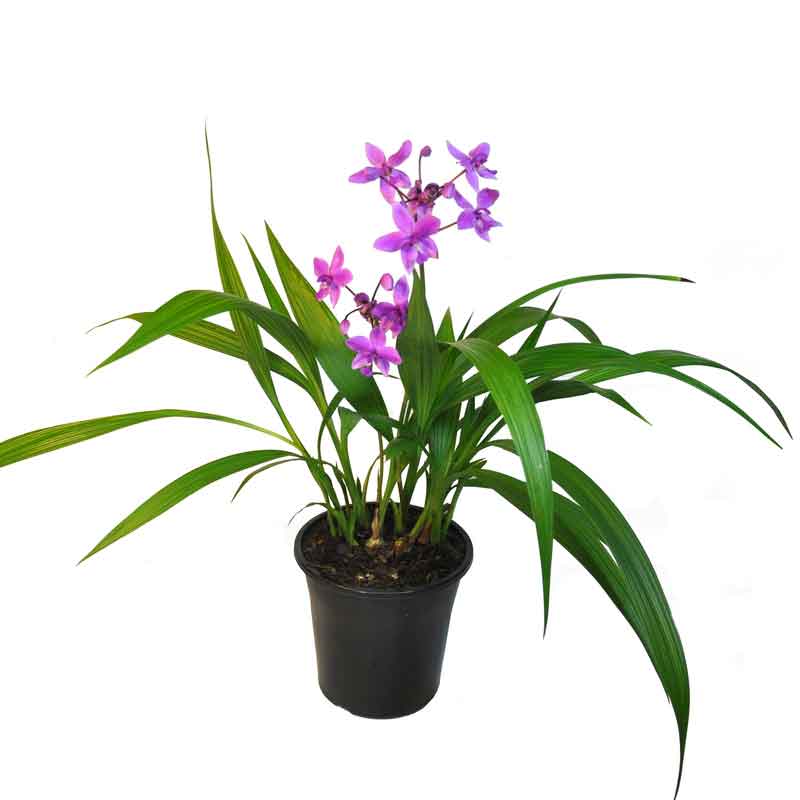
FAQ'S About Growing Ground Orchid
1.How to care for Ground orchid plants?
In order for orchid plants in the soil to be healthy and long-lived, due care and attention should be paid to their care. Keep the soil balanced but do not overwater. Water your orchid when the top finger of the soil feels dry to the touch, adjusting the frequency according to the environment such as temperature, humidity. Avoid overwatering, which can cause root rot, and provide good drainage to prevent water stagnation. Give ground orchids filtered sunlight or partial shade. Inside the house, place them near a curtained window or use lighting to provide good lighting.
2.What is the use of planting ground orchids?
Ground orchid plants have many practical and beautiful uses; This makes them a valuable addition to the garden, landscape and indoor environment. Landscape orchids are often used in landscaping to add color, texture and visual interest to garden beds, verges and paths. Its beautiful leaves and beautiful flowers can enhance the overall beauty of your outdoor space. Ground cover orchids can be used as ground cover by gradually spreading into a thick mat or clump. They help reduce the growth of plants, prevent soil erosion and the formation of leaves and flowers, especially in shade or partial shade.
3. Can I grow Ground orchids indoors?
Yes, you can grow Ground orchid plants indoors as long as you meet their specific requirements such as light, humidity, temperature and soil. Ground orchids need bright, indirect light to thrive indoors. Place them near a curtained window or use lighting to provide good lighting. Do not expose it to direct sunlight, especially during the hottest hours of the day, as this will cause the leaves to burn. Ground orchids like medium to high humidity, similar to their habitat. Use a watering can to keep the soil around the plant moist, place a bowl filled with water and pebbles under the orchid, or sprinkle the orchid with regular water. Keep the temperature around your orchid at a moderate temperature, preferably between 18-29°C (65-85°F) during the day and slightly cooler at night. Do not put plants under summer conditions, or sudden changes in temperature or environment, which can stress the plants. Use a well-watered pot designed specifically for orchids or prepare a soil mixture containing ingredients such as perlite, pine bark and coconut fiber. Make sure there is good drainage to prevent standing water, which can cause root rot.
4.What is the best pot for growing indoor orchids?
When choosing pots for growing orchids in soil, factors such as drainage, size, material and beauty should be taken into account. Choose a pot with enough water to drain excess water from the soil. Good drainage is important to prevent waterlogging and root rot in soil orchids. If the pot does not have a drainage hole, consider cutting or drilling a hole in the bottom. Choose a pot with enough space for your orchid's roots to grow and expand. Avoid pots that are too small as these can become crowded and hinder root development. A pot smaller in diameter than the orchid's root system is usually sufficient. Choose a pot made of porous material such as terracotta, clay or ceramic, which allows air and moisture to penetrate the soil and encourages root growth. Do not use plastic containers that trap moisture and cannot provide adequate ventilation to the orchid's roots. Choose a wide and shallow pot instead of a deep and narrow pot. Ground orchids have shallow roots, so a wider pot provides more room for root growth and better access to light and air.
5.Where can I buy soil orchid plants?
You can buy orchid plants from many places depending on your preference and location.
1. Local Nurseries and Garden Centers
2. Online Plant Stores
3. Orchid Store
4. Orchid Shows and Events

